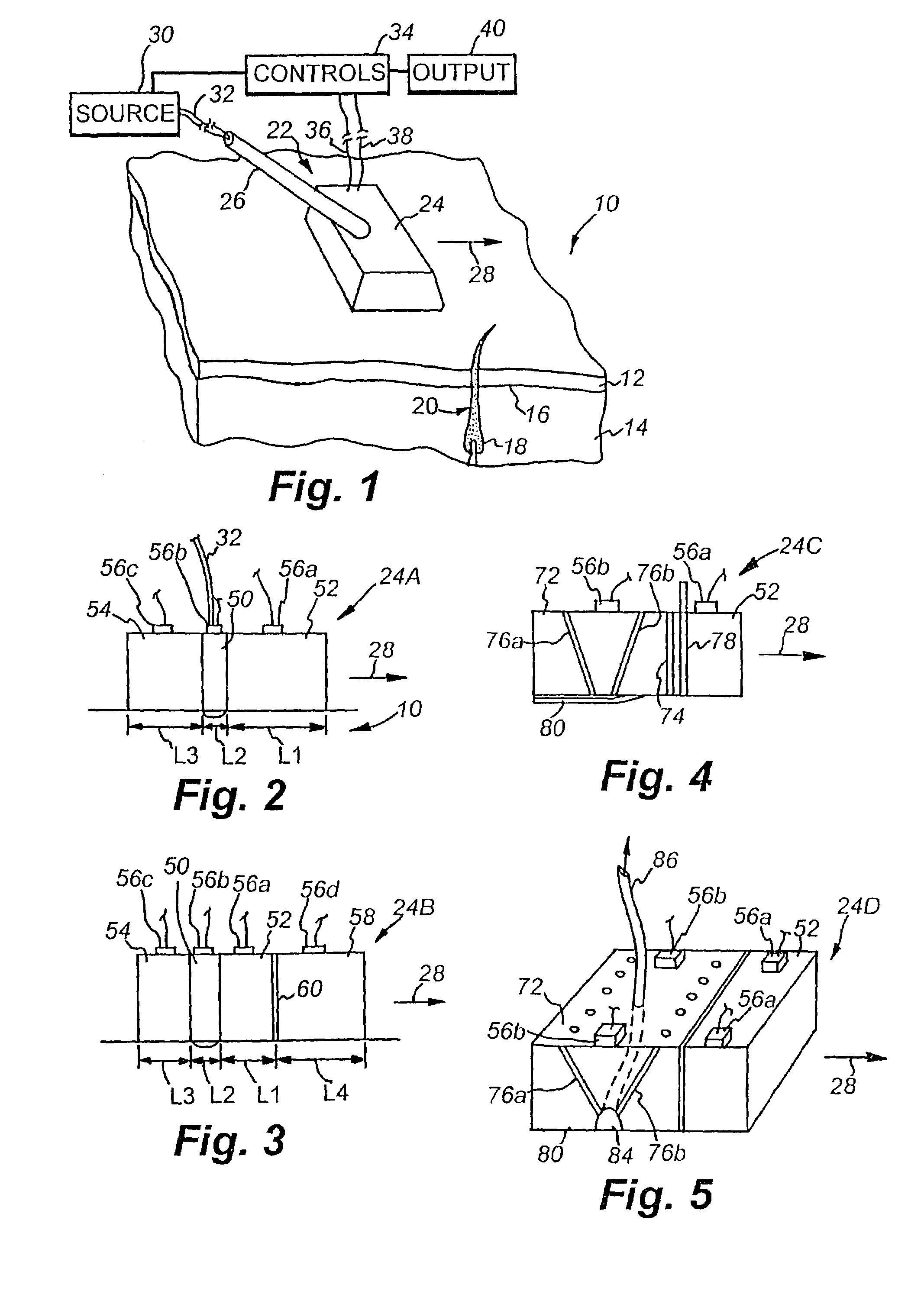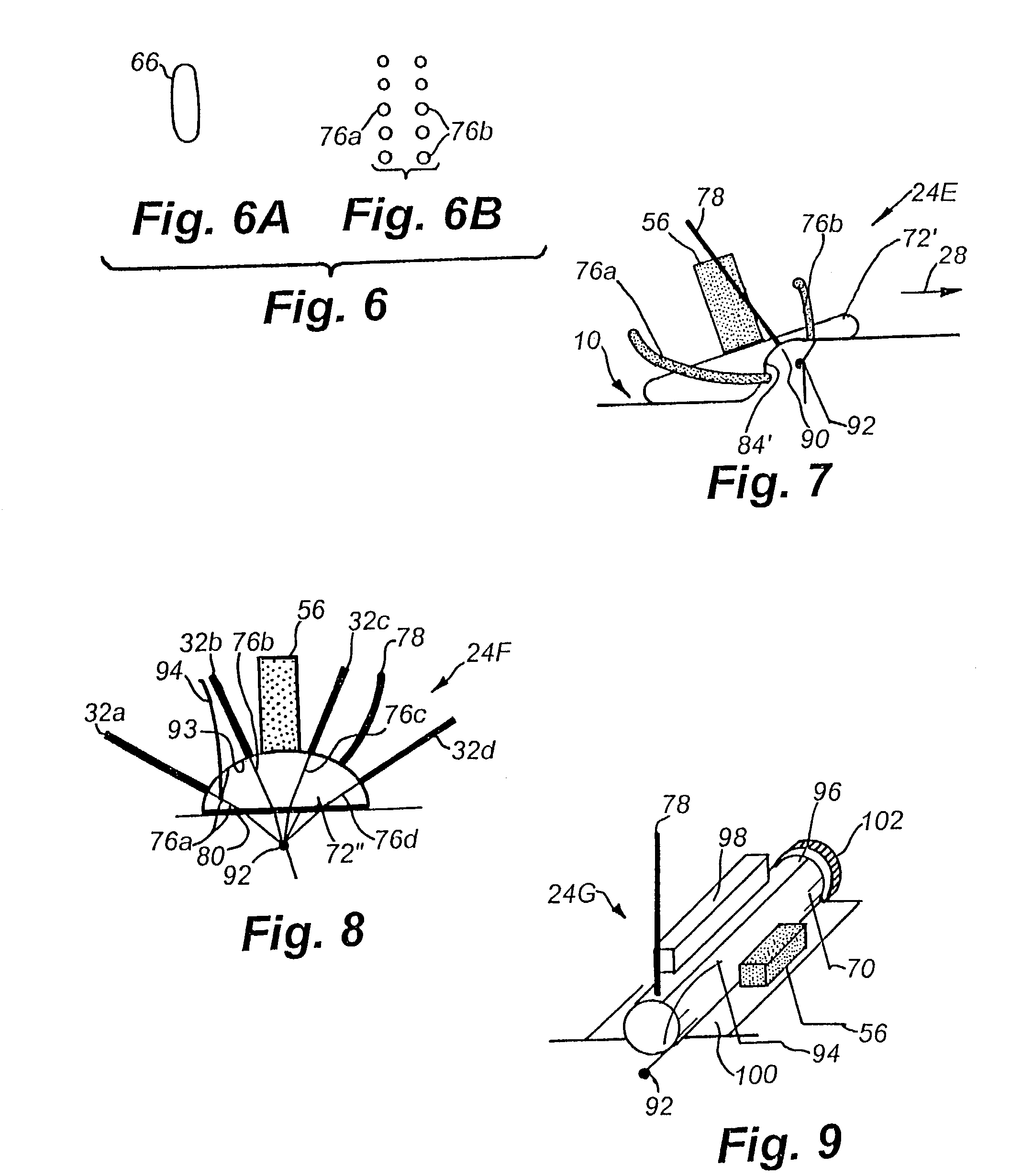Heads for dermatology treatment
a dermatology treatment and head technology, applied in the field of head for dermatology treatment, can solve the problems of increasing the potential for epidermal damage, the more expensive pulsed light source used for various dermatological treatments, and the potential for damage thereto, and achieve good heat transfer properties
- Summary
- Abstract
- Description
- Claims
- Application Information
AI Technical Summary
Benefits of technology
Problems solved by technology
Method used
Image
Examples
Embodiment Construction
[0035]FIG. 1 illustrates a general system suitable for practicing the teachings of this invention. In FIG. 1, an area 10 of a patient's skin is shown on which a selected dermatologic treatment is to be performed. As indicated earlier, the treatment may be for removal of unwanted hair, tattoos, port wine stains, spider, veins or other vascular lesions, etc. The patient's skin has an epidermal layer 12 and a dermal layer 14, with a dermal-epidermal (D / E) junction or basal layer 16 therebetween. While some dermatologic treatments may involve heating the epidermis 17, such as for example skin resurfacing, most dermatologic treatments which involve the use of optical radiation treat a condition located at a selected volume (sometimes hereinafter referred to as the target volume or target) within dermal layer 14. For example, when the dermatological treatment is hair removal, it may be desired to heat and destroy the bulb 18 of a hair follicle 20. While epidermis 12 might for example be 0...
PUM
 Login to View More
Login to View More Abstract
Description
Claims
Application Information
 Login to View More
Login to View More - R&D
- Intellectual Property
- Life Sciences
- Materials
- Tech Scout
- Unparalleled Data Quality
- Higher Quality Content
- 60% Fewer Hallucinations
Browse by: Latest US Patents, China's latest patents, Technical Efficacy Thesaurus, Application Domain, Technology Topic, Popular Technical Reports.
© 2025 PatSnap. All rights reserved.Legal|Privacy policy|Modern Slavery Act Transparency Statement|Sitemap|About US| Contact US: help@patsnap.com



